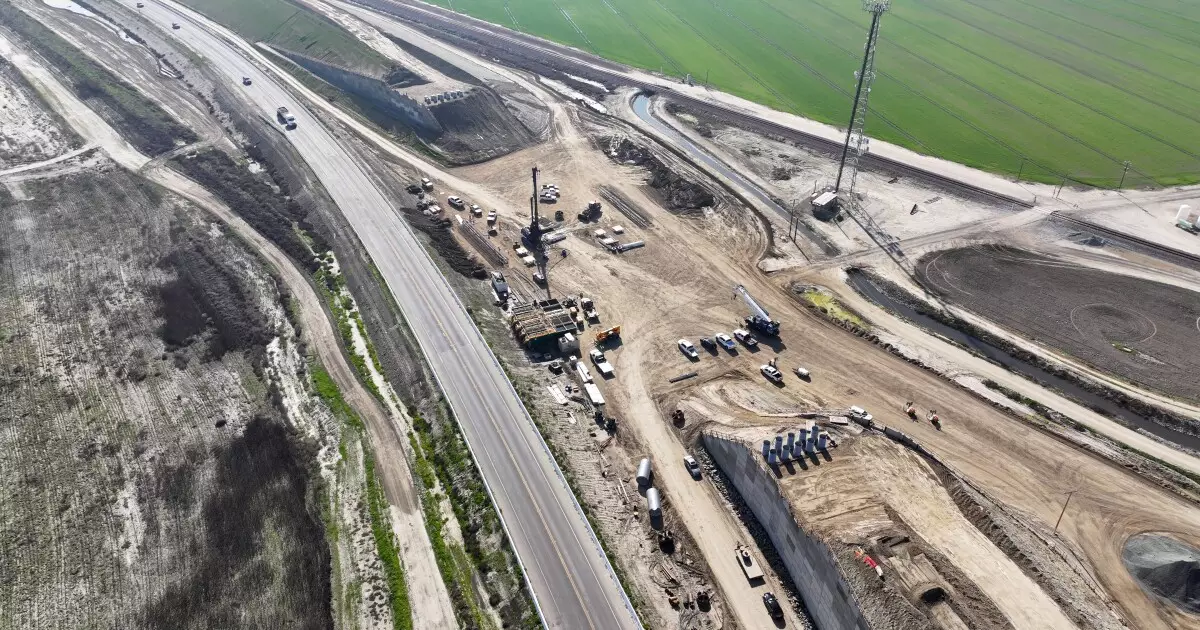The recent decision to cut off $4 billion in federal funding for California’s high-speed rail project exposes a troubling truth about the nation’s ambitious infrastructure dreams: they often become symbols of governmental overreach and fiscal irresponsibility. Despite promises of innovation and economic revitalization, the reality has been a persistent saga of delays, ballooning costs, and broken commitments. Federal authorities have lost faith in the project’s ability to deliver, citing chronic mismanagement and an inability to meet binding obligations. It’s a cautionary tale of how grand visions, when left unchecked by prudent oversight, turn into costly boondoggles draining public resources. Rather than being a testament to American ingenuity, this project exemplifies what happens when unchecked political ambitions collide with budgetary realities.
Failure to Deliver: The Hidden Costs of Political Patronage
At its core, the high-speed rail project parades as a forward-looking infrastructure upgrade. Yet, beneath the surface, it is riddled with inefficiencies and a fundamental lack of accountability. The California High Speed Rail Authority repeatedly failed to meet deadlines, underrepresented ridership projections, and overpromised on budget and scope. Moreover, federal reviews have consistently flagged the project’s inability to justify its costs or its economic viability, flagging a troubling pattern of incompetence and political favoritism.
The federal government’s decision to rescind significant funding — rooted in comprehensive compliance reviews — underscores a vital principle: taxpayer dollars are not unlimited; they must be earned through tangible results. The administration’s move reflects a moral stance, emphasizing fiscal discipline over political vanity. Expecting federal taxpayers to bankroll a project that has become a symbol of political mismanagement is neither responsible nor sustainable. It’s a wake-up call that government funds must be reserved for initiatives that demonstrate real deliverables, not just political aspirations.
The Political Divide and the Strategic Disconnect
The debate over the fate of California’s high-speed rail project is as much political as it is economic. California’s governor and the project’s advocates dismiss the termination as a partisan attack, framing it as an attempt to sabotage regional progress. They invoke the state’s resilience and the potential for future private investment to salvage the project. However, this idealistic narrative conveniently ignores the fundamental issues of feasibility and financial oversight that have plagued the project from inception.
From a pragmatic center-right perspective, it is clear that the project exemplifies misplaced priorities and a failure to adhere to sound fiscal policies. Heavy reliance on federal grants and state-backed borrowing without transparent accountability reveals a reckless neglect of taxpayers’ interests. While proponents argue for continued state funding, the reality is that California’s cap-and-trade revenues will fund this $128 billion endeavor—despite its historical failures—highlighting a dangerous complacency. This continuous cycle of overpromising and underdelivering reveals an underlying disrespect for responsible governance and prudent financial planning.
The Lesson in Fiscal Responsibility and Political Integrity
The saga of California’s high-speed rail should serve as a reminder that government programs demand rigorous oversight, clear accountability, and realistic expectations. The project’s failure to deliver on promises not only hampers regional development but also erodes public trust in government institutions. Overspending, delays, and misrepresentations have become hallmarks of this endeavor — and a warning against allowing political motives to override fiscal discipline.
Conservatives and center-right thinkers must advocate for a more responsible approach to infrastructure development, one rooted in transparency and measurable outcomes. Federal funding should be contingent on project milestones, cost controls, and demonstrated demand. California can still pursue high-speed connectivity, but only if it shifts towards models emphasizing private investment, sustainable planning, and accountable governance. Continuing to pour public money into a project with such a troubled track record risks repeating the cycle of waste and disillusionment.
In the end, the bitter truth is that this failed high-speed rail project embodies the perils of unchecked political enthusiasm and neglect of fiscal responsibility. It’s a costly lesson in what happens when political expediency takes precedence over prudent, results-driven governance. Restoring public trust demands a commitment to fiscal discipline and an acknowledgment that not every utopian vision is worthy of taxpayer support. Sometimes, the best way forward is to recognize that not all ambitions are worth the price — especially when they threaten to become perpetual liabilities instead of catalysts for progress.

